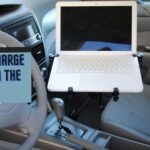How Many Watts Does it Takes To Charge A Laptop? It is assumed that the battery of a laptop is fully recharged once a day, and the number of watts it takes to charge a laptop varies between 20 to 50W.
The power required to charge a laptop is far less than the power required to run a desktop PC with an external monitor.
This is because laptops are typically charged to 100 percent once per day on average compared with desktops which may only be plugged in for hours here and there throughout the day.
The amount of electricity that a laptop computer requires to reach a full charge can differ, but it is averagely between 20 and 50 watts.
However, not all of this power is used up by heat and radiation, which reduces the percentage* of your laptop running on battery. On average, roughly 30% of this energy is emitted from your laptop in the form of heat and infrared radiation.
Therefore, only approximately 70% of the electricity required to charge your laptop is being received by your laptop itself.
It is vital to remember that the quality of batteries that you are using will make a difference when it comes time for your battery to recharge.
The efficiency of your laptop’s ability to charge is affected by power consumption
When charging your laptop, the longer it takes for your battery life to reach 100%, the more power necessary is being used from your laptop at that time.
If you are using a larger laptop, like those 17-inch jobs that take up the entire top of your desk, rest assured that it will consume more power in standby mode even when it is not being used than a smaller laptop.
Take for example tablets or notebooks with their smaller screens and overall reduced size – they have an advantage as far as energy use age is concerned.
This can also be noticed when one has both lenses of a DSLR camera open all the way at once to capture crisp images, sometimes resulting in overheating. View here how to keep your laptop cool all the time so it won’t overheat and stop working properly.
Factors That Can Affect the Power Consumption Of A Laptop
Regardless of whether your laptop is portable or not, it takes a lot of power to run these machines. However, depending on the machine’s specifications, there are a few components that may demand more electricity than others to work properly.
When not connected to a power source, a laptop’s power usage can range anywhere from 20 to 100 watts depending on the model.
Laptops with smaller screens tend to use less than laptops with larger screens. If a laptop is charging and primarily operating off of battery power then its present power consumption of 10-20 percent will increase by another 5 percent.
The factors that affect the level of energy consumption the most are:
- The size of the display
- If there is a graphics card installed
- The performance of the CPU (central processing unit)
- The amount of RAM (Random Access Memory)
- The type and amount of hard drives installed (Hard disk, SSD, or both)
- Amount and size of fans
Display
You should know that the size of your laptop display can affect which adapter you will need to use to charge your laptop. For example, if your laptop is a 15-inch model, it will require a 65-watt charging adapter; and if it’s 17 inches, it will require a 90-watt charger.
Thus, laptop chargers input more power into your laptop as your laptop’s screen size increases because the larger the screen, How Many Watts Does it Takes To Charge A Laptop the higher the battery capacity it requires and therefore the greater amount of power is needed to charge a battery.
Other Factors
Additionally, there are many things that might affect how much your laptop consumes the battery.
For instance, playing audio or videos can require a lot of power, because the computer must both generate an image and sound.
The same is true if you’re using a camera to take pictures or record video. Additionally, downloading things takes a lot of power, as does connecting to the internet (especially when streaming video).
Another thing to consider is that some people like to use their laptops in low-light situations.
This will cause your computer’s lights to come on, which also sucks up power. Finally, it should go without saying that doing anything on your laptop will consume more battery than doing nothing – so try not to surf the web for hours on end.
Conclusion
Please be reminded that computer systems are known to consume a relatively large amount of power.
Please remember to take note of the volts listed on your laptop; however, when using this information as a guide, please do not let it stress you out.
Remember that the voltage multiplied by the amperes stated in your computer’s specification should give you an idea of how much power your system is likely to use.
It is also crucial to consider how raising the temperature of a device when it is on the go since elevating its temperature beyond 35 degrees may shorten the longevity and operational lifetime of your laptop.

Cody is a passionate gamer, writer, and computer programmer who’s always looking for ways to optimize and automate everyday tasks. When he’s not immersed in prose and code, he’s busy tinkering with computers, automating his home, and spending time with his wife and kids.





